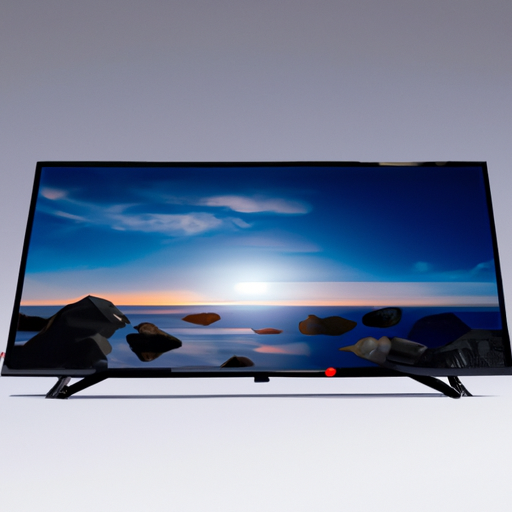The Ultimate Guide to 3.91 LED Display Manufacture
Introduction to 3.91 LED Display Manufacturing
In the world of LED displays, the 3.91 LED display has emerged as a top choice for many applications due to its high resolution, durability, and versatility. In this comprehensive guide, we will delve into every aspect of 3.91 LED display manufacture, from the intricacies of the production process to the benefits and applications of these displays. Our goal is to provide you with a detailed understanding that can help you make informed decisions and appreciate the technology behind this cutting-edge display solution.
What is a 3.91 LED Display?
A 3.91 LED display refers to an LED screen where the pixel pitch (the distance between the centers of two adjacent pixels) is 3.91 millimeters. This relatively small pixel pitch ensures high resolution and clarity, making it ideal for both indoor and outdoor applications.
Key Features of 3.91 LED Displays
- High Resolution: The 3.91mm pixel pitch enables sharp and detailed images.
- Durability: Built to withstand various environmental conditions.
- Versatility: Suitable for various uses including advertising, sports arenas, and concerts.
The Manufacturing Process of 3.91 LED Displays
1. Concept and Design
Every 3.91 LED display begins with a thorough conceptualization and design phase. This step involves:
- Market Research: Understanding client needs and industry trends.
- Initial Design: Creating a blueprint of the product, including the layout and technical specifications.
- Prototyping: Developing a prototype to test the design’s feasibility and functionality.
2. Selection of Raw Materials
Choosing high-quality raw materials is crucial for the durability and performance of the display. The key components include:
- LED Chips: Typically sourced from reputable manufacturers like Nichia, Cree, or Epistar.
- Printed Circuit Boards (PCBs): Ensure efficient electrical connections between the LED chips.
- Housing Materials: Includes aluminum for the cabinet and plastics for the module casing.
3. SMT (Surface-Mount Technology)
The SMT process involves mounting the LED chips onto the PCBs. This step is highly automated and requires precision machinery. Key stages include:
- Solder Paste Application: Applying solder paste onto the PCB.
- Pick and Place: Placing the LED chips accurately onto the solder paste.
- Reflow Soldering: Heating the assembly to form a solid solder joint.
4. Module Assembly
After SMT, the individual LED chips are grouped into modules. Each LED module includes:
- LED Matrix Assembly: Arranging the LED chips into a grid.
- Connecting Components: Attaching power supplies, data cables, and other necessary parts.
- Testing for Defects: Conducting rigorous quality checks to ensure each module functions correctly.
5. Cabinet Assembly
LED cabinets are the structural units that house multiple modules. The assembly process involves:
- Securing Modules: Mounting the LED modules within the cabinet.
- Connecting Modules: Ensuring all electrical and data connections are secure.
- Cabinet Testing: Verifying the functionality of the entire cabinet before final assembly.
6. Final Assembly and Calibration
The final assembly involves combining multiple cabinets to create the complete LED display. Essential steps include:
- System Integration: Integrating control systems and power distribution units.
- Calibration: Adjusting color and brightness uniformity to ensure a consistent display quality.
7. Quality Control and Testing
Strict quality control measures are in place throughout the manufacturing process to ensure the highest standards. Testing includes:
- Aging Test: Running the display for extended periods to detect potential failures.
- Environmental Testing: Ensuring the display can withstand various environmental conditions such as extreme temperatures and humidity.
- Certifications: Compliance with international standards such as CE, FCC, and RoHS.
Benefits of 3.91 LED Displays
Superior Image Quality
The high pixel density of 3.91 LED displays delivers stunning image clarity and vibrant colors, making them perfect for applications where image quality is paramount.
Energy Efficiency
Modern 3.91 LED displays are designed to be energy-efficient, reducing operational costs and the environmental impact.
Flexibility and Customization
These displays can be easily customized in terms of size, shape, and installation method, offering unparalleled flexibility for various applications.
Durability and Reliability
With robust construction and advanced waterproofing technologies, 3.91 LED displays are built to last, even in challenging environments.
Applications of 3.91 LED Displays
Indoor Applications
- Concerts and Events: Provides high-definition visuals for audiences.
- Trade Shows: Attracts attention with vibrant displays and interactive content.
- Retail and Advertising: Enhances visual marketing strategies.
Outdoor Applications
- Sports Arenas: Displays real-time scores, advertisements, and replays.
- Billboards: Captures the attention of passersby with dynamic content.
- Public Spaces: Used for announcements, entertainment, and information dissemination.
Leading Manufacturers of 3.91 LED Displays
Several manufacturers are renowned for their expertise in producing high-quality 3.91 LED displays. Some of the industry leaders include:
- Absen: Known for innovation and quality in LED display technology.
- Unilumin: Specializes in creating versatile and reliable LED displays.
- Leyard: Offers a range of display solutions tailored to specific needs.
Conclusion
The 3.91 LED display manufacture process is intricate and requires precision at every step to ensure the final product meets the highest standards of quality and performance. From selecting premium raw materials to the meticulous assembly and rigorous testing phases, each stage plays a vital role. The result is a versatile, reliable, and visually stunning display that can enhance any venue, event, or application.
Whether you are looking to incorporate high-resolution displays in an indoor setting, or need durable and vibrant screens for outdoor use, 3.91 LED displays offer a perfect solution. By understanding the manufacturing process, you can appreciate the technology and effort that goes into creating these top-of-the-line displays. Choose a reputable manufacturer to ensure you receive a product that meets your specific requirements and stands the test of time.

